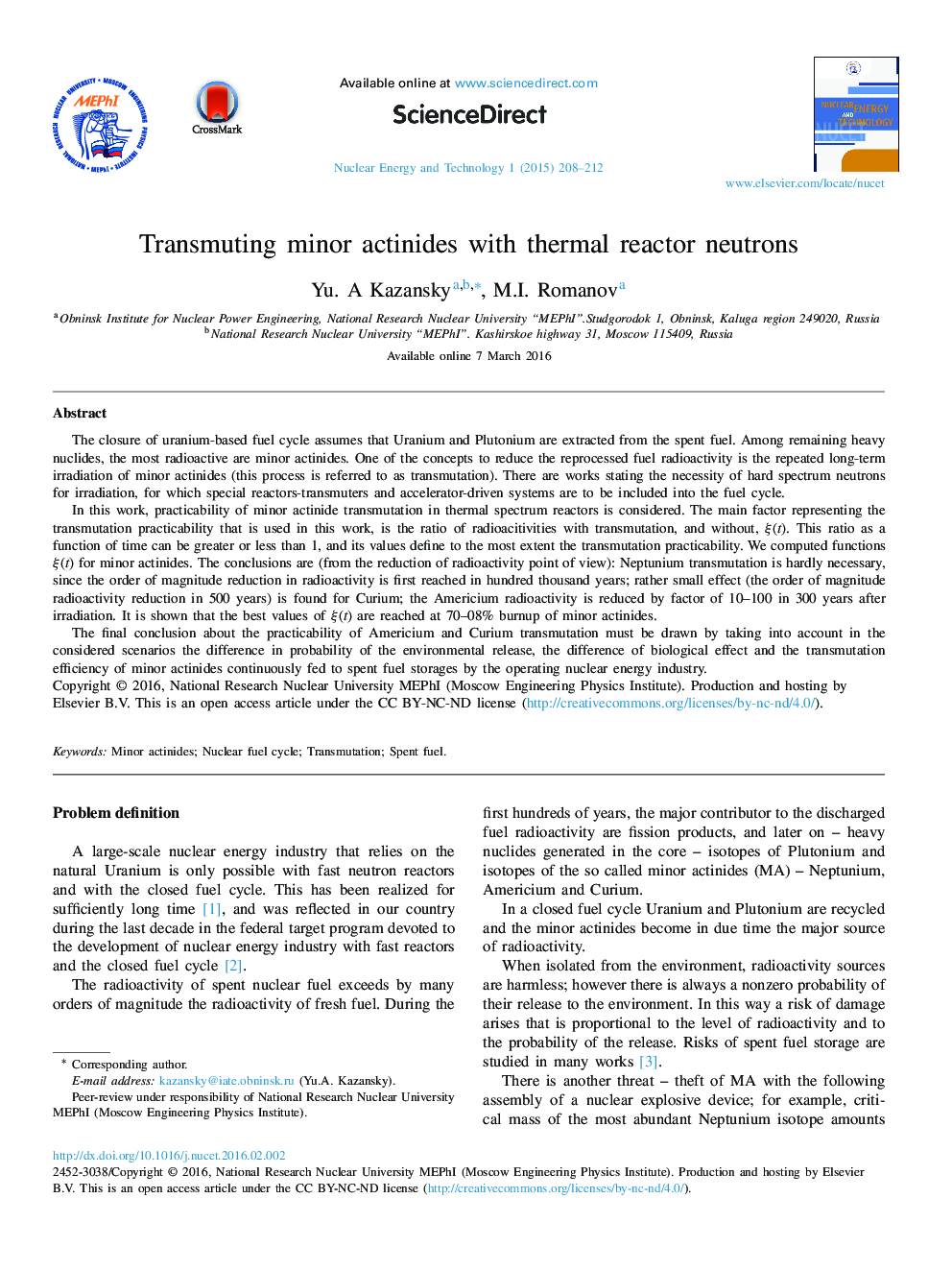| Article ID | Journal | Published Year | Pages | File Type |
|---|---|---|---|---|
| 366573 | Nuclear Energy and Technology | 2015 | 5 Pages |
The closure of uranium-based fuel cycle assumes that Uranium and Plutonium are extracted from the spent fuel. Among remaining heavy nuclides, the most radioactive are minor actinides. One of the concepts to reduce the reprocessed fuel radioactivity is the repeated long-term irradiation of minor actinides (this process is referred to as transmutation). There are works stating the necessity of hard spectrum neutrons for irradiation, for which special reactors-transmuters and accelerator-driven systems are to be included into the fuel cycle.In this work, practicability of minor actinide transmutation in thermal spectrum reactors is considered. The main factor representing the transmutation practicability that is used in this work, is the ratio of radioacitivities with transmutation, and without, ξ(t). This ratio as a function of time can be greater or less than 1, and its values define to the most extent the transmutation practicability. We computed functions ξ(t) for minor actinides. The conclusions are (from the reduction of radioactivity point of view): Neptunium transmutation is hardly necessary, since the order of magnitude reduction in radioactivity is first reached in hundred thousand years; rather small effect (the order of magnitude radioactivity reduction in 500 years) is found for Curium; the Americium radioactivity is reduced by factor of 10–100 in 300 years after irradiation. It is shown that the best values of ξ(t) are reached at 70–08% burnup of minor actinides.The final conclusion about the practicability of Americium and Curium transmutation must be drawn by taking into account in the considered scenarios the difference in probability of the environmental release, the difference of biological effect and the transmutation efficiency of minor actinides continuously fed to spent fuel storages by the operating nuclear energy industry.
